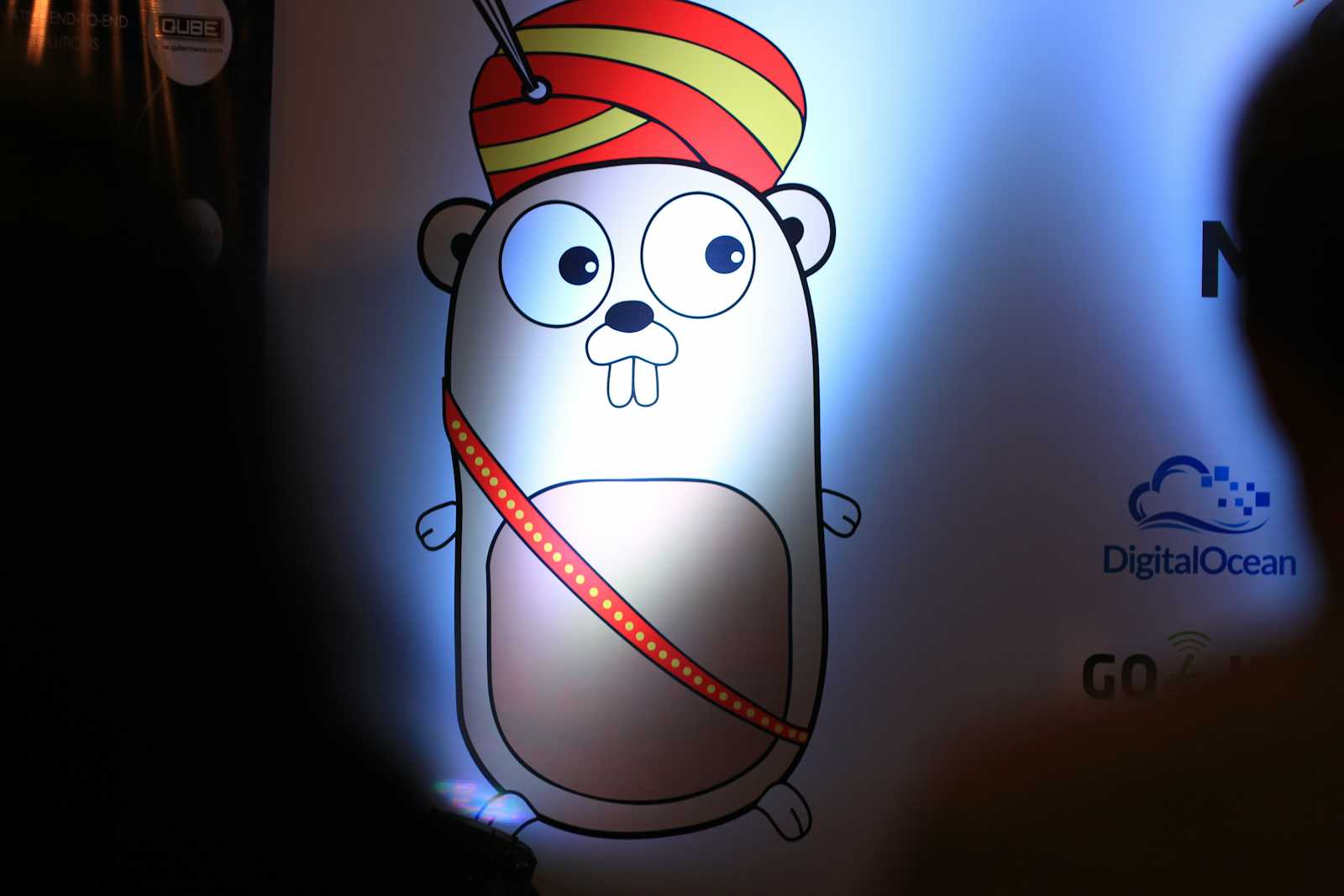Understanding Go's UTF-8 Support: Coding with Non-Latin Alphabets
 Ashwin Gopalsamy
Ashwin Gopalsamy
I've been exploring Go's UTF-8 support lately, and was curious about how well it handles non-Latin scripts in code.
Go and UTF-8
Go source files are UTF-8 encoded by default. This means you can, in theory, use Unicode characters in your variable names, function names and more.
For example, in the official Go playground boilerplate code, you might come across code like this:
package main
import "fmt"
func main() {
消息 := "Hello, World!"
fmt.Println(消息)
}
Here, 消息 is Chinese for "message." Go handles this without any issues, thanks to its Unicode support. This capability is one reason why Go has gained popularity in countries like China and Japan—developers can write code using identifiers meaningful in their own languages. You won’t believe it, but there’s a huge popularity in China, for writing code in their native language and I love it.
Attempting to Use Tamil Identifiers
Naturally, I wanted to try this out with Tamil, my mother tongue.
Here's a simple example I wrote:
package main
import "fmt"
func main() {
எண்ணிக்கை := 42 // "எண்ணிக்கை" means "number"
fmt.Println("Value:", எண்ணிக்கை)
}
At first glance, this seems straightforward that can run without any errors.
But, when I tried to compile the code, I ran into errors
./prog.go:6:11: invalid character U+0BCD '்' in identifier
./prog.go:6:17: invalid character U+0BBF 'ி' in identifier
./prog.go:6:23: invalid character U+0BCD '்' in identifier
./prog.go:6:29: invalid character U+0BC8 'ை' in identifier
./prog.go:7:33: invalid character U+0BCD '்' in identifier
./prog.go:7:39: invalid character U+0BBF 'ி' in identifier
./prog.go:7:45: invalid character U+0BCD '்' in identifier
./prog.go:7:51: invalid character U+0BC8 'ை' in identifier
Understanding the Issue with Tamil Combining Marks
To understand what's going on, it's essential to know a bit about how Tamil script works.
Tamil is an abugida—a writing system where each consonant-vowel sequence is written as a unit. In Unicode, this often involves combining a base consonant character with one or more combining marks that represent vowels or other modifiers.
For example:
The Tamil letter
க(U+0B95) represents the consonant sound "ka"To represent "ki" you'd combine
கwith the vowel signி(U+0BBF), resulting inகி.The vowel sign
ிis a combining mark, specifically classified as a "Non-Spacing Mark" in Unicode.
Here's where the problem arises.
Go's language specification allows Unicode letters in identifiers but excludes combining marks. Specifically, identifiers can include characters that are classified as "Letter" (categories
Lu,Ll,Lt,Lm,Lo, orNl) and digits, but not combining marks (categoriesMn,Mc,Me).
Examples of Combining Marks in Tamil
Let's look at how Tamil characters are formed:
Standalone Consonant:
க(U+0B95) - Allowed in Go identifiers.Consonant + Vowel Sign:
கா(U+0B95 U+0BBE) - Not allowed becauseா(U+0BBE) is a combining mark (Mc).Consonant + Vowel Sign:
கி(U+0B95 U+0BBF) - Not allowed becauseி(U+0BBF) is a combining mark (Mn).Consonant + Vowel Sign:
கூ(U+0B95 U+0BC2) - Not allowed becauseூ(U+0BC2) is a combining mark (Mc).
In the identifier எண்ணிக்கை ("number"), the characters include combining marks:
எ(U+0B8E) - Letter, allowed.ண்(U+0BA3 U+0BCD) - Formed byண(U+0BA3) and the virama்(U+0BCD), a combining mark (Mn).ண(U+0BA3) - Letter, allowed.ிக்கை- Contains combining marks likeி(U+0BBF) andை(U+0BC8).
Because these combining marks are not allowed in Go identifiers, the compiler throws errors when it encounters them.
Why Chinese Characters Work but Tamil Doesn't
Chinese characters are generally classified under the "Letter, Other" (Lo) category in Unicode. They are standalone symbols that don't require combining marks to form complete characters. This is why identifiers like 消息 work perfectly in Go.
Practical Implications
The inability to use combining marks in identifiers has significant implications for scripts like Tamil:
Limited Expressiveness: Without combining marks, it's nearly impossible to write meaningful identifiers in Tamil.
Educational Barriers: Using native scripts can make learning to code more accessible, but these limitations hinder that possibility, particular for languages that follow abugida-based writing system.
Inclusivity Challenges: While Go aims for inclusivity with its UTF-8 support, the restrictions on combining marks exclude many languages that rely on them.
Wrapping Up
Go's UTF-8 support is a great step toward making programming more inclusive. However, the exclusion of combining marks in identifiers creates barriers for languages like Tamil, Hindi and Arabic, where combining marks are integral to the script.
As a developer from Tamilnadu, working primarily in Go, this discovery was both exciting and a bit disappointing. It highlights the complexities of true internationalization in programming languages.
Who codes in native languages for building Software Products !?!!!!
Absolutely! Not so much apart from the East-asian region, where ‘abugida’ based writing system isn’t followed.
And, obviously, creators of Go would not have intended the UTF-8 compliance for ‘native-language coding’ at first place. The reason was more towards providing better ASCII processing, alignment with modern web standards, consistent string handling and a step towards interoperability.
This attempt was just my curiosity in understanding how far we can take the UTF-8 Compliance in Go. As someone who works on building scalable, distributed fintech systems in Go, I found it essential to be aware of these nuances.
Thats about it. Thanks for reading along.
Happy coding :) May the code be with you.
Subscribe to my newsletter
Read articles from Ashwin Gopalsamy directly inside your inbox. Subscribe to the newsletter, and don't miss out.
Written by

Ashwin Gopalsamy
Ashwin Gopalsamy
Product-first engineer, blogger and open-source contributor with around 4 years of experience in software development, cloud-native architecture and distributed systems. I build fintech products that process millions of transactions daily and drive substantial revenue. My expertise spans designing, architecting and deploying scalable software, focusing on the business under the code. I collaborate closely with engineers, product owners, and guilds, known for my clear communication and team-centric approach in dynamic environments. Colleagues appreciate my adaptability, openness and focus on diverse, meaningful contributions. Beyond coding, I’m recognized for my documentation, ownership and presentation skills, which drive clarity and engagement across teams. Bilingual in English and Deustch, I bridge cross-functional teams across geographies, ensuring smooth, efficient communication. I’m always open to new opportunities for connection and collaboration. Let’s connect and explore ways to create together.